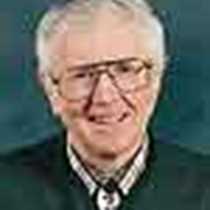Astoria, Oregon
A U.S Coast Guard life boat rescue with the sound of wind and great green combers is one of the interactive displays at Columbia River Maritime Museum, where we began our day after a five minute walk from Sea Bird’s moorage.
An historic 44-foot motor lifeboat that served 34 years on Yaquina Bay entrance and the notorious Columbia River Bar is positioned; it's seen riding onto the crest of a great swell while the crew rescues a seaman with all the sound and fury of the event.
This life boat was pushed to the limit in its service on the Columbia River entrance which the National Transportation Safety Board declared “the most hazardous area” in the entire 88,533 miles of United States coastline.
It was rolled completely several times and pitch poled from end to end in 30-foot seas. From Cape Disappointment Coast Guard Life Boat Training Station, tucked just inside the great river entrance, hundreds of coxswains have received their training and baptism in all weather and emergencies on the Columbia Bar before going on assignment around the Nation’s seaways.
Along with rescue by Coast Guard life boats and helicopters, museum visitors experience what it’s like to pilot ships over the bar, serve on the bridge of a WWII Navy destroyer, live aboard the historic Lightship Columbia (a floating lighthouse), set pots for Dungeness crab in winter seas or drift gillnets for salmon.
We visited Fort Clatsop, where the Corps of Discovery wintered as well as could be expected in 1805-06 on a diet of spoiled boiled elk, and Astor Column which celebrates John Jacob Astor’s expeditions sent by sea and by land to establish an American fur trading center on the West Coast in 1810.
A hiking party went by bus to Beard’s Hollow on the Washington shore to experience a Sitka spruce seaside forest and the sand and surf. One delighted hiker from Michigan shed her shoes and socks to get the real feel of the North Pacific on this stormy day.
Before departing Astoria, Capt. David Kay took Sea Bird to the start of the Columbia Bar so we could all feel the Pacific swells and view Cape Disappointment through swirls of mist. It was Capt. Robert Gray trading from Boston to this coast for sea otter pelts who first got across this bar and discovered the long sought “River of the West” which he named for his ship Columbia. It provided our young Nation with its first tentative claim in the Old Oregon Country.
A U.S Coast Guard life boat rescue with the sound of wind and great green combers is one of the interactive displays at Columbia River Maritime Museum, where we began our day after a five minute walk from Sea Bird’s moorage.
An historic 44-foot motor lifeboat that served 34 years on Yaquina Bay entrance and the notorious Columbia River Bar is positioned; it's seen riding onto the crest of a great swell while the crew rescues a seaman with all the sound and fury of the event.
This life boat was pushed to the limit in its service on the Columbia River entrance which the National Transportation Safety Board declared “the most hazardous area” in the entire 88,533 miles of United States coastline.
It was rolled completely several times and pitch poled from end to end in 30-foot seas. From Cape Disappointment Coast Guard Life Boat Training Station, tucked just inside the great river entrance, hundreds of coxswains have received their training and baptism in all weather and emergencies on the Columbia Bar before going on assignment around the Nation’s seaways.
Along with rescue by Coast Guard life boats and helicopters, museum visitors experience what it’s like to pilot ships over the bar, serve on the bridge of a WWII Navy destroyer, live aboard the historic Lightship Columbia (a floating lighthouse), set pots for Dungeness crab in winter seas or drift gillnets for salmon.
We visited Fort Clatsop, where the Corps of Discovery wintered as well as could be expected in 1805-06 on a diet of spoiled boiled elk, and Astor Column which celebrates John Jacob Astor’s expeditions sent by sea and by land to establish an American fur trading center on the West Coast in 1810.
A hiking party went by bus to Beard’s Hollow on the Washington shore to experience a Sitka spruce seaside forest and the sand and surf. One delighted hiker from Michigan shed her shoes and socks to get the real feel of the North Pacific on this stormy day.
Before departing Astoria, Capt. David Kay took Sea Bird to the start of the Columbia Bar so we could all feel the Pacific swells and view Cape Disappointment through swirls of mist. It was Capt. Robert Gray trading from Boston to this coast for sea otter pelts who first got across this bar and discovered the long sought “River of the West” which he named for his ship Columbia. It provided our young Nation with its first tentative claim in the Old Oregon Country.




